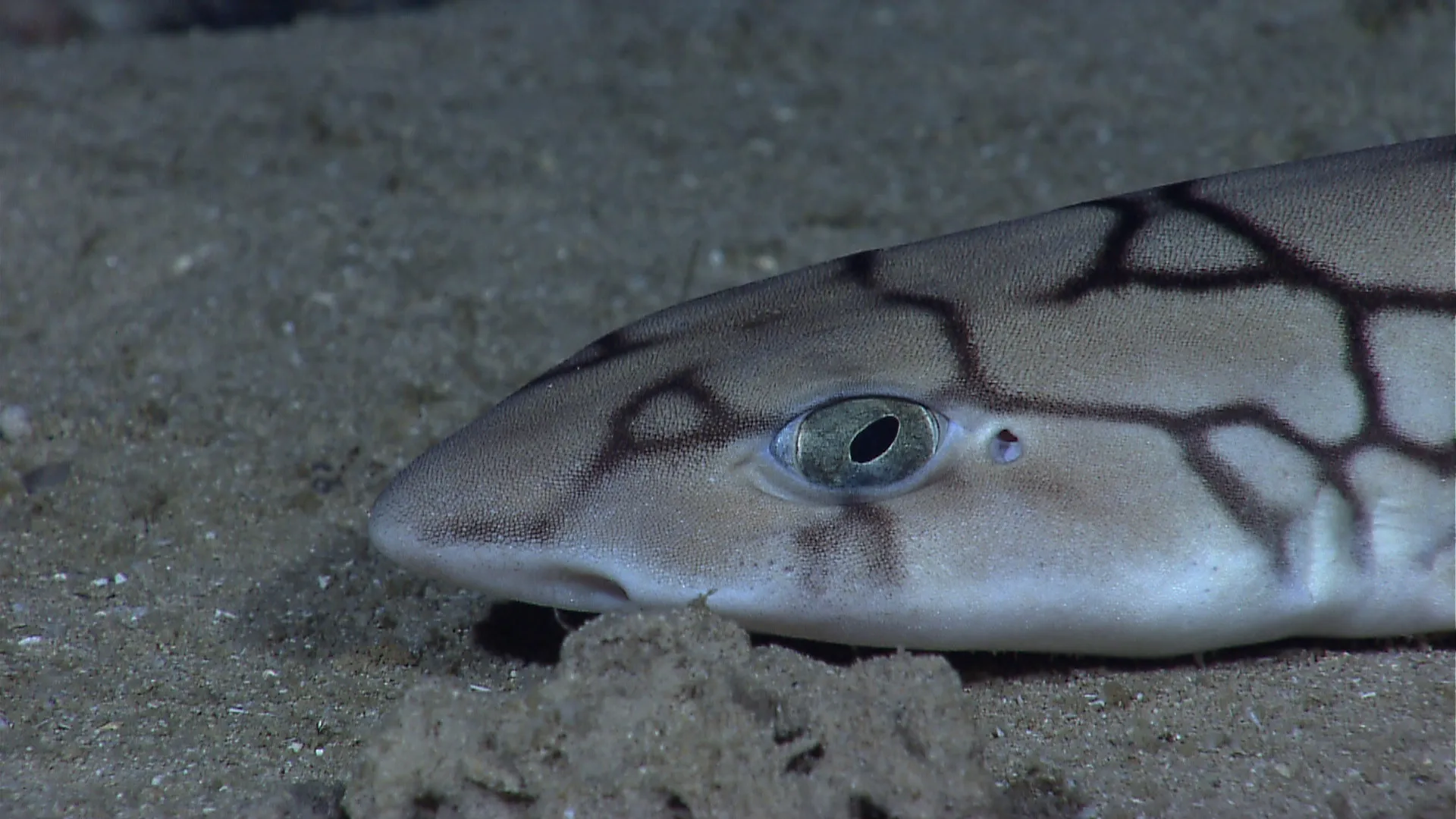All About the Catshark
This fish is always on the prowl

Not to be confused with the similarly named catfish, the catshark is an interesting aquatic animal. And yes, even though they dwell on the ocean floor, they have a couple of characteristics in common with their feline namesake.
If you’ve ever walked into a room with the lights off and been startled by your cat’s gleaming eyes, you know that they have special light-sensitive eyes designed for hunting in total darkness. It turns out that catsharks do, too.
Get Ocean Updates in Your Inbox
Sign up with your email and never miss an update.
In addition to their elongated, cat-like shape, their eyes have adapted to glow in the dark due to a layer of reflective cells behind their retinas. They are always on the prowl at deep depths. Don’t worry though—they are too small and slow-moving to hurt humans, and their diet consists mostly of small fish, crustaceans, cephalopods and other small invertebrates.
While their glowing eyes are the most obvious comparison, even their short snouts and slender bodies evoke the appearance of our kitty friends.
Their Family
Catsharks are in the family Scyliorhinidae, which is the largest family of sharks with around 160 species identified. A huge amount of diversity is found in this one family, including the chain, filetail, ghost, boa, blackmouth and demon catsharks.
Why all the scary sounding names? They are primarily nocturnal bottom-dwellers after all! Some more cuddly-sounding species include the coral, redspotted, pepper, mouse and lollipop catsharks.

Let’s take a closer look at a couple of these species and how they got their fun names:
Demon Catshark
Earlier this year, this new species of catshark was found off the deep waters of Australia. The discovery was covered in several high profile media articles, including in the New York Times.
Also referred to as a ghost catshark, demon catsharks are named for their distinctive white eyes, sharp snouts and dark coloring, which give them a slightly eerie appearance, as though they’ve been possessed… by a demon.
Filetail Catshark
This catshark has a cool tail! The top of its caudal fin (also known as the tail fin, which allows all fish to steer and propel themselves through the water) is covered in spikey scales.
Leopard Catshark
This one is easy—the leopard catshark, or Poroderma pantherinum—gets its name from its pattern of spots resembling the fierce jungle feline. Their markings can have several different configurations. Some are marked with rosettes, broken lines and spots of varying sizes and colors.
Mouse Catshark
The conflictingly named mouse catshark lurks in the continental slopes at depths of 1,000-4,000 feet. This plain brown resident of the Atlantic Ocean gets its name from the furry appearance of the golden-yellow egg capsules produced by the female during reproduction.
Lollipop Catshark
Clocking in at just about 11 inches, the lollipop is one of the smallest species of catshark. Not a lot is known about this deep-sea dweller, but its name, as with most others, comes from its appearance. In this case, the lollipop has a large, round head with a slender trunk and tail. This makes it look like one of your favorite sweet treats.
Despite being the largest family of sharks, so much is still unknown about the elusive catshark due to their propensity to live at deep depths.
Between their small size, harmless (to humans) nature, descriptive identifications and variety of appearances, there’s a lot to appreciate about these sharks that live in our ocean.
Join Ocean Conservancy in helping us keep animals like the catshark protected to prowl another day.